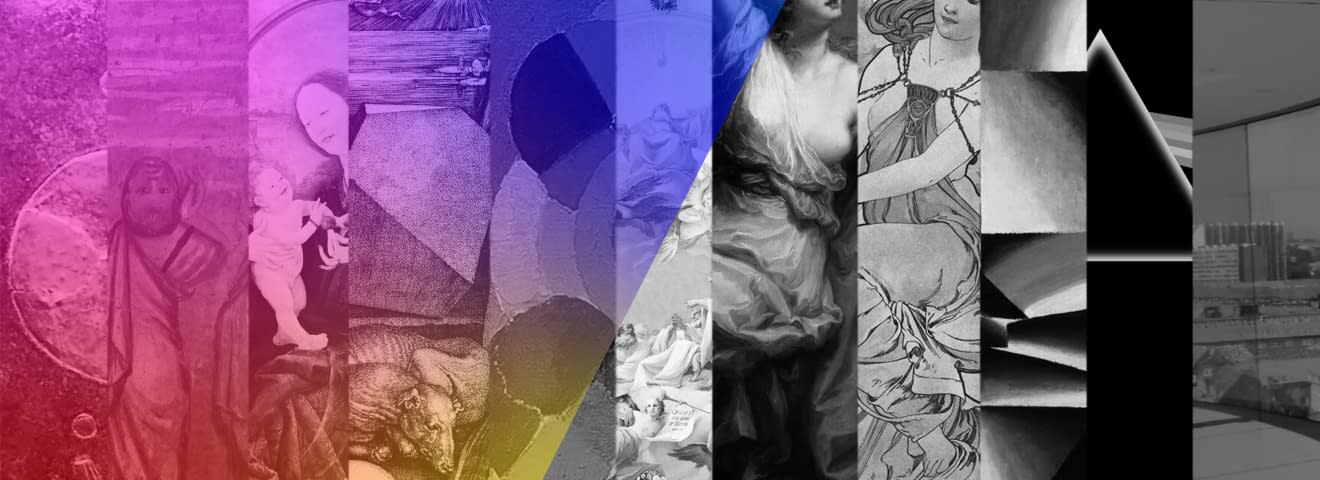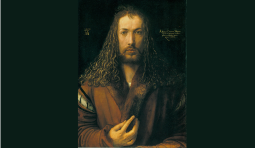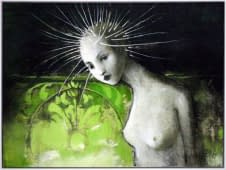Rainbow #12 - A Rainbow is a Rainbow is a Rainbow... - a Story without an End
How it all began: Rainbows as symbols for deities or rifts in the sky
This magical, once scientifically inexplicable arch has fascinated humankind since time immemorial. Depending on the cultural affiliation, the celestial phenomenon with its broad symbolism had different explanations: the Mayans, for example, saw it as a goddess, Nordic mythology saw the rainbow as a bridge between the realm of gods and humans, in China it mended a crack in the sky with five coloured stones and for the Australian Aborigines, the sky-dwelling, bisexual rainbow serpent was a symbol of the infinity of the world (art24 rainbow #1).

Fig. 1: Reproduction of a rock painting in the Tassili n'Ajjer Mountains in the Sahara of Algeria, 6,000-4,000 BC, dancer or goddess, probably framed by a rainbow, photo: smarthistory.org.
Rainbows as a sign of peace or divine light
Its sudden appearance in the sky also fascinated people in the early and late Middle Ages: Was it a miracle? Or even a sign of the divine, supernatural sphere? Numerous passages in the Bible as well as in secular epics refer to the rainbow as a hopeful bridge between God and man and, in later depictions, as a sign of salvation for "God with us". As a motif for "Christ in glory" (as a sign of the glory of God/Christ), the rainbow refers to the divine, which is incomprehensible to humankind (art24 rainbow #2). In the course of the late Middle Ages and the early Renaissance, it mutates in depictions of the Last Judgement into a colourful, astonishingly natural rainbow throne for Christ and - as a special motif - in scenes of the Annunciation into colourful angels' wings that underline the inexplicable events (art24-Rainbow #3).
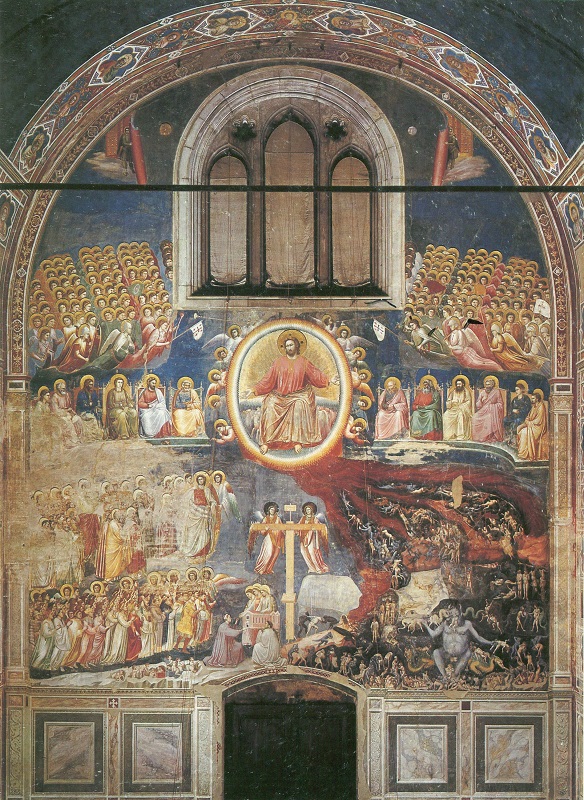
Fig. 2: The Last Judgement with Christ as Pantocrator on the rainbow throne in a rainbow mandorla, Giotto di Bondone, Arena Chapel in Padua, fresco on the west wall, 1304-1306. photo: zeno.org.
Rainbows under observation
The 15th and 16th centuries were a time of thorough observation and scientific realisation, which drove artists to take a closer look. Whether Leonardo da Vinci (1452-1519) or Raphael (da Urbino, 1483-1520), they were painter-researchers thirsting for knowledge who recorded their nature-related analyses in studies. In the rainbow, they discovered laws of harmony predetermined by nature, which had to be translated into colour perfection. The rainbow was on its way to being scientifically researched (art24 rainbow #4).
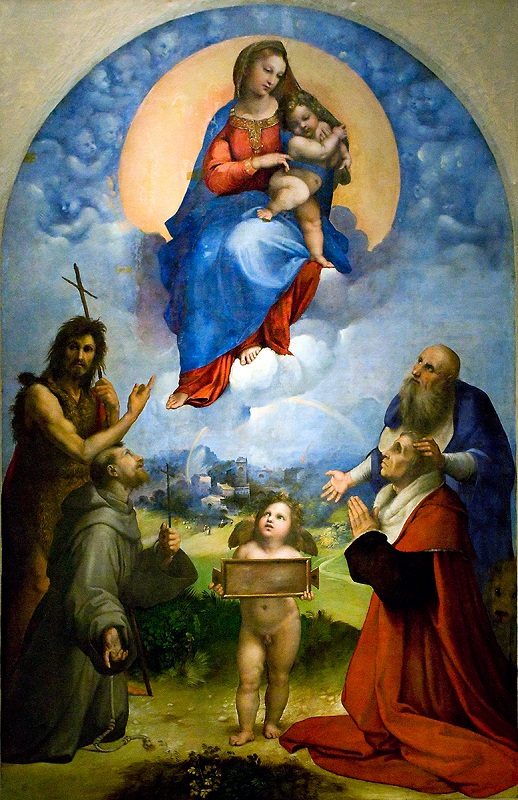
Fig. 3: Raphael da Urbino, Madonna of Foligno (1511/12). Tempera on panel, transferred to canvas in 1800/01, 308 x 109 cm, Vatican Pinacoteca (Room VIII), Vatican City.
Although Aristotle had experimented with the incidence of light through various coloured glasses when developing his colour theory, it was not until the 15th century that da Vinci laid "one of the most important first theoretical foundations for the systematic arrangement of colours" (art24-Rainbow #5). The rainbow and its colours were always accompanying factors, leading to the colour wheel of Isaac Newton in the 18th century, J. W. von Goethe in the early 19th century, Johannes Itten's colour star and Paul Klee's colour wheel in the 20th century.
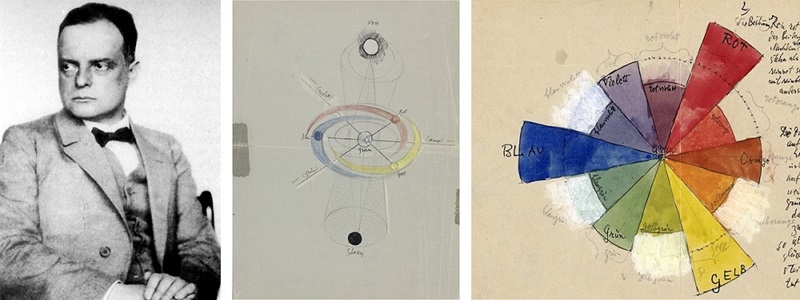
Fig. 4-6: Paul Klee (1927), Klee's colour wheels from his manuscript on the theory of design ©Zentrum Paul Klee.
Rainbows as a symbol of chaos, drama, imagination or reason
While the Baroque era had a pronounced sense of flourishing fantasy, whimsicality or exuberant sensuality and enigmas that placed the rainbow somewhere between idealism and illusionism, in dramatically staged landscape settings or exuberant ceiling frescoes (art24 rainbow #6), artists in the Age of Enlightenment and Reason (art24-Regenbogen #7) committed themselves on the one hand to the exact reproduction of precisely observed celestial atmospheres, such as the successful Angelika Kauffmann (1741-1807); On the other hand, there were visionaries such as William Blake (1757-1827), who invented distant universes or threatening apocalypses in which rainbow-like colour gradients can be found.
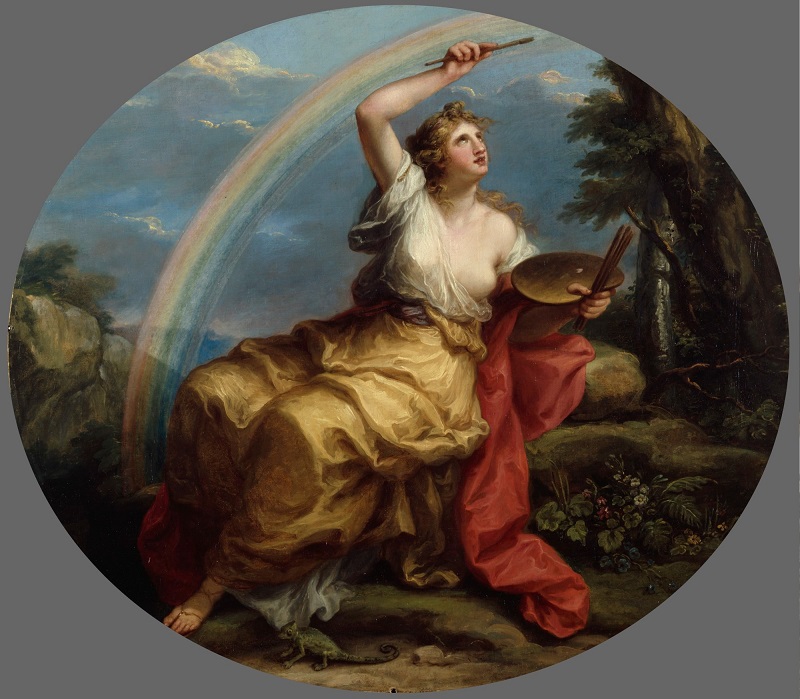
Fig. 7: Angelika Kauffmann, Colouring, 1778 to 1780, transverse oval ceiling painting, 130 x 149.5 cm, Royal Academy of Arts, Somerset House, London. Photo: Wikimedia Commons.
Rainbows as lucky charms, bearers of hope or under observation
While the "colourful arch" was still a sign of happiness and hope for the poet Goethe, under the brush of the English artist William Turner it acquired the status of a natural phenomenon that - meticulously observed in the open air - is solely sufficient in itself, without being symbolically charged. The fact that Caspar David Friedrich (1774-1840) placed a white arch in a thunderstorm landscape as a sign of the covenant between God and humankind, thus preserving the tradition of religious imagery, is surprising despite the romantic sublimity and reflects the complexity of interpretation of the rainbow. It was only the Impressionists who returned to a precise observation of nature, while symbolic and stylised rainbows characterised the Symbolist and Art Nouveau eras (art24-Rainbow #8).
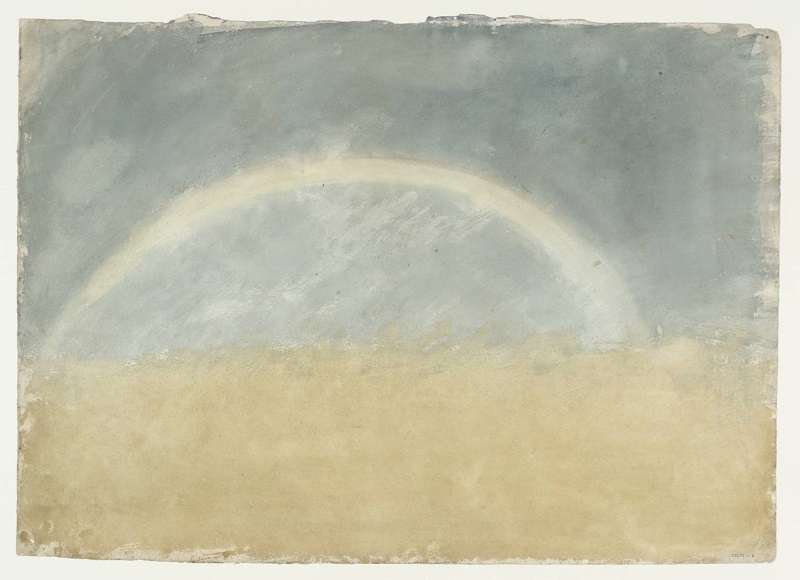
Fig. 8: Joseph Mallord William Turner, A Rainbow, c. 1820, watercolour on paper, 35.3 x 48.8 cm, Department of Prints and Drawings, Tate Britain (Turner Bequest CXCVI R).
Rainbows as a reflection of art styles, advertising medium and symbol of peace
Their painted rainbows became as individual as the artists themselves over the course of the 20th century. They were hardly a reflection of reality any more, but an expression of personal moods reflecting the styles of the time: sometimes expressionist-poetic in the work of Wassily Kandinsky or expressive-spiritual in the work of Franz Marc, sometimes visualising a supernatural-spiritual sphere, as in the work of Paul Klee, through to an abstract formal language in the work of Arthur Segal or the visualisation of natural forces in the work of Otto Piene (art24-Rainbow #9).
_800pix.jpg)
Fig. 9: Otto Piene, Lichtbogen (Regenbogen für Hering), colour silkscreen on cardboard, hand-finished with spray paint, 1966, 50 x 70 cm, signed, dated, Epreuve d`artiste. Private property.
Over the next few decades, the mass media and advertising increasingly discovered the rainbow (art24 rainbow #10). Along with the rise of activist movements in the 1960s and 1970s, the colourful arch increasingly became a symbol of the peace movement as a "pace flag" and became an internationally recognisable symbol of the lesbian and gay movement. A triumphal march that continues in the 21st century in architecture, installations and immersive art, creating atmospheric, walk-in worlds thanks to modern technologies that give the rainbow new dimensions and allow us to become part of the art (art24 rainbow #11).

Fig. 10: ARoS art museum in Aarhus with the installation "Your Rainbow Panorama" by Ólafur Elíasson on the roof, built in 2004, Photo: Wikipedia CC BY-SA 4.0.
What else will we experience in the future when AI-generated, rainbow-coloured art dreams come true? When artists use methods that are still unknown today to create rainbow spaces or levels that bring deceleration, regeneration and resilience to stressed, unmotivated people? Let's give free rein to our imagination and inspiration; next time we see a rainbow in the sky, let's marvel at its colourful play of colours and remember that our ancestors once regarded the rainbow as a mystical miracle.
Like the rainbow, the art24 platform brings together a diverse, colourful universe in which the creativity of artists takes centre stage. The colour gradient of the art24 logo visualises this creativity as a world of the inexhaustible. Have you already discovered a rainbow-coloured favourite work on art24? Or have you noticed a rainbow picture in a gallery or museum? Write to us about it. We look forward to your feedback at hello@art24.world.
